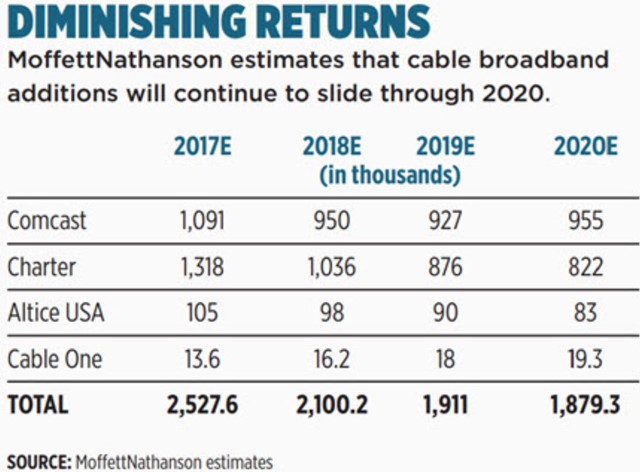Investment in cable infrastructure is projected to reach $2 billion by 2023, according to a report by Dell’Oro Group.
 Global cable operators are investing heavily in distributed, virtualized architectures in order to transform the cable broadband networks. The purpose of their investment is to create more efficient networks, offer premium bandwidth, and stay ahead of fiber-based competitors, said Jeff Heynen, research director at Dell’Oro Group.
Global cable operators are investing heavily in distributed, virtualized architectures in order to transform the cable broadband networks. The purpose of their investment is to create more efficient networks, offer premium bandwidth, and stay ahead of fiber-based competitors, said Jeff Heynen, research director at Dell’Oro Group.
Investments in DAAs will prepare cable operators for a future of 10 Gbps services using a combination of extended spectrum DOCSIS, full duplex DOCSIS 3.1 and, ultimately, fiber to the home.
Sales of cable broadband access equipment will increase from $1.5 billion in 2019 to $2billion in 2023, driven by spending on remote PHY and MACPHY devices, as well as virtual CCAP platforms.
Spending on cable equipment will grow faster than PON equipment over the same period.
XGS-PON will outpace NG-PON2 deployments throughout our forecast period, owing to lower component and equipment costs.
VDSL Profile 35b and Gfast will offset some—not all of the revenue loss from declining ADSL port shipments. Some major Gfast deployments are already seeing signs of shrinking, as governments lobby operators to increase their investments in fiber.
